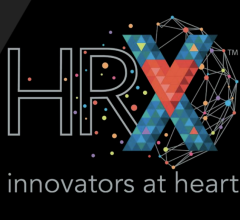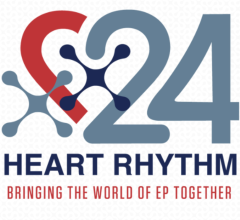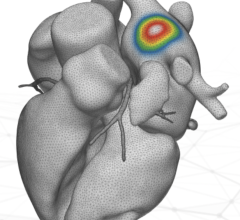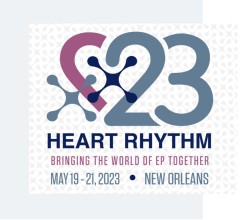
April 28, 2025 — iRhythm Technologies, Inc. recently announced results from a large real-world retrospective analysis presented at the Heart Rhythm Society’s annual meeting, in San Diego, CA, The Assessment of Variation in AmbuLatory Cardiac MONitoring: Real-World Evidence of Commercially Insured Beneficiaries (AVALON) study — drawing on claims data from a cohort of 428,707 commercially insured patients—represents the largest real-world comparative evaluation of ambulatory cardiac monitoring (ACM) among this population to date, and reinforces the clinical superiority of the Zio long-term continuous monitoring (LTCM) service.
The Zio LTCM service consists of a prescription-only, patch-based ECG monitoring device that captures up to 14 days of continuous, uninterrupted data, and the ZEUS (Zio ECG Utilization Software) system with an FDA-cleared AI algorithm clinically proven to perform at the level of cardiologists.1 The system delivers an end-of-wear report that is reviewed and validated by qualified cardiac technicians, with a 99% physician agreement rate.2
Building on findings from the CAMELOT (Cardiac Ambulatory Monitor EvaLuation of Outcomes and Time to Events) study — published in the American Heart Journal — which demonstrated the clinical superiority of the Zio LTCM service among a Medicare population, the AVALON study evaluated a younger, commercially insured population (mean age: 46 years). Like CAMELOT, the AVALON data showed that Zio LTCM service was associated with the highest diagnostic yield compared to other ACM modalities and all other LTCM services, and a lower likelihood of repeat testing compared to all other LTCM services. AVALON also found that Zio LTCM service was associated with a lower likelihood of cardiovascular (CV) events compared to other ACM modalities and all other LTCM services.
Also at HRS, as part of a separate analysis, data were also presented showing that use of the MyZio App, a patient smartphone accessory app designed to improve patient engagement and enable digital symptom logging, was associated with increased symptom reporting, improved symptom-rhythm correlation, and a greater rate of arrhythmia-correlated dairy entries compared to non-users — demonstrating that digital apps can provide additional contextual clinical information and reinforcing the value of digital engagement alongside ambulatory cardiac monitoring.
“Once again, we have strong real-world evidence that compellingly demonstrates the superiority of Zio’s 14-day, uninterrupted, patch-based monitoring — AVALON extends findings beyond Medicare to patients in common commercial insurance plans,” said Mintu Turakhia, MD, iRhythm Chief Medical and Scientific Officer and EVP of Product Innovation. “We’re also proud of MyZio, which enriches the patient experience and provides more information to their doctor. As a Top 40 Medical App, our iOS App has a 4.7 rating — a rare accomplishment among medical device connected apps.”
Clinical Outcomes in Real-World Cardiac Monitoring
The AVALON study aimed to assess the impact of ambulatory cardiac monitoring strategy on three key clinical outcomes: diagnostic yield, likelihood of repeat testing, and likelihood of cardiovascular (CV) events.3 These outcomes reflect both the immediate diagnostic effectiveness of ambulatory cardiac monitoring and its longer-term clinical implications.
Diagnostic yield — the ability to identify clinically relevant arrhythmias during a monitoring period—is a critical measure of effectiveness, as it enables earlier, more confident treatment decisions and may reduce the need for additional testing. Arrhythmias are commonly paroxysmal and infrequent. Therefore, device design, and performance AI, and quality of technician review can all affect whether arrhythmias are identified. Repeat testing may reflect diagnostic uncertainty, which can delay care and increase the burden on both patients and clinicians. In real-world settings, retest rates offer practical insight into diagnostic efficiency. CV events, such as cardiac arrest, myocardial infarction (MI), embolic stroke, or heart failure, represent meaningful long-term outcomes. Reducing the likelihood of these CV events is a key goal in arrhythmia management and may reflect the broader clinical impact of monitoring strategy.
Using closed claims data,4 investigators identified 428,707 commercially insured patients who were diagnostically naïve — defined as having no prior cardiac monitoring, arrhythmia diagnosis, or arrhythmia-related procedures or medications in the 12 months prior to the index date (baseline period). Of the records analyzed, 36% of patients used LTCM, 36% used a Holter monitor, and 27% used an ambulatory event monitor (AEM). The mean age ranged from 45 to 46 years across ACM cohorts.
Diagnostic Yield and Likelihood of Retest and Cardiovascular Events
New arrhythmia diagnosis — as documented in clinical encounter claims using ICD-10 codes for specified arrhythmias, within the first 90 days was highest for Zio LTCM service (26.5%), followed by non-iRhythm LTCM (18.4%), AEM (17.0%), and Holter monitoring (14.7%).
Zio LTCM service was associated with the highest adjusted odds of a new arrhythmia encounter diagnosis compared to other ACM modalities and all other LTCM services. Compared to Holter monitors, Zio LTCM service was 2.04 times more likely to have a new arrhythmia encounter diagnosis within 90-days. Compared to AEM, Zio LTCM was 1.69 times more likely to have a new arrhythmia encounter diagnosis within 90-days. Compared to non-iRhythm LTCM services, Zio LTCM service was 1.56 times more likely to have a new arrhythmia encounter diagnosis within 90-days. Compared to Bardy LTCM service, Zio LTCM service was 1.12 times more likely to have a new arrhythmia encounter diagnosis within 90-days. Compared to Biotelemetry LTCM service, Zio LTCM service was 1.72 times more likely to have a new arrhythmia encounter diagnosis within 90-days. Compared to Preventice LTCM service , Zio LTCM service was 1.69 times more likely to have a new arrhythmia encounter diagnosis within 90-days. Compared to “Other LTCM,” Zio LTCM service was 1.61 times more likely to have a new arrhythmia encounter diagnosis within 90-days.
Zio LTCM service was associated with lowest adjusted odds of retesting within 180 days compared to all other LTCMs from service providers in the same extended monitoring category. Compared to Zio LTCM service, all non-iRhythm LTCMs were 1.95 times more likely to result in a retest. Across the providers in the LTCM space, Bardy, BioTelemetry, Preventice, and “Other LTCM” providers were associated, respectively, as 1.41, 1.39, 1.30, and 3.52 times more likely to result in a retest within 180 days compared to Zio LTCM.3
Zio LTCM service was associated with lowest adjusted odds of cardiovascular events within 1-year compared to ACM modalities and all other LTCMs from service providers in the same extended monitoring category.
Holter monitors were 1.13 times more likely and AEM were 1.21 times more likely to have a CV event within 1-year compared to Zio LTCM service. Compared to Zio LTCM service, non-iRhythm LTCMs were 1.23 times more likely to have a CV event within 1-year after accounting for baseline patient differences. Across the providers in the LTCM space, Bardy, BioTelemetry, Preventice, and “Other LTCM” providers were 1.11, 1.24, 1.19, and 1.23 times more likely, respectively, to have a CV event within 1-year compared to Zio LTCM.3
1 Hannun et al. Cardiologist-level arrhythmia detection and classification in ambulatory electrocardiograms using a deep neural network. Nat Med. 2019;25:65-69. https://doi.org/10.1038/s41591-018-0268-3
2 99% of physicians agree with the comprehensive end-of-wear report. Based on a review of all online Zio XT, Zio monitor, and Zio AT end-of-wear reports. Data on file. iRhythm Technologies, 2023.
3 Cardiovascular Events defined as cardiac arrest, MI, arterial embolism and thrombosis, embolic stroke, systemic embolism, coronary heart disease, chronic obstructive pulmonary disease, cerebrovascular disease, heart failure
4 The analysis was conducted using closed claims data from a large, national commercial health plan dataset maintained by BHI (Blue Health Intelligence).
5 Data on file. iRhythm Technologies, 2025.
6 Data on file. iRhythm Technologies, 2024.


 July 30, 2024
July 30, 2024 








